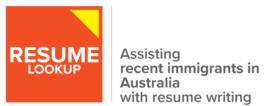Your resume format is your chance to make a great first impression on potential employers
Struggling to make your resume stand out? You’re not alone. Crafting a strong resume format is crucial for success in the Australian job market. With so much competition, it’s important to keep it simple and avoid flashy design elements. By following these expert tips, you can create a standout resume that showcases your skills and experience.
Key points
-
- Simplicity for Success: Crafting a strong Australian resume format means keeping it simple and avoiding flashy design, as complex layouts may hinder ATS and fail to impress hiring managers.
- Effective Formatting: Opt for a clear, 11-12pt sans-serif font, and ensure a visually appealing and well-crafted resume that showcases professionalism and attention to detail.
- Content and Length: Aim for a 2-4 page resume focusing on quality experience, including personal info, a concise summary, key skills, education, professional achievements, relevant hobbies, and a note about references.
According to experts, keeping your resume format simple and clean has several advantages:
-
-
- To begin, some companies screen resumes using Applicant Tracking Systems (ATS), and these systems frequently struggle to read complex layouts with graphics and columns. As a result, a poorly designed resume may never even reach the hiring manager’s desk.
- Fancy or difficult-to-read fonts may turn off recruiters and employers. To make sure your resume is easy on the eye, it’s best to stick with a simple, sans-serif font, ideally between 11 and 12pt.
- A well-crafted and visually appealing resume can say a lot about you as a potential employee. It shows that you take pride in your work and that you are a professional who pays attention to detail.
-
While you don’t have to be a design expert to follow a great resume format, it’s important to start with a clean and functional template. Then you need to customise it to your specifications. You can ensure that your resume format stands out for all the right reasons by doing so.
The optimal length
Your resume should be two to four pages long to be in the best format, depending on your relevant experience. By keeping your word count low, you can concentrate on quality rather than quantity. When it comes to providing context for the roles you’ve listed, less is more. Making your resume format stand out by describing your achievements in as few words as possible.
It is critical to pay attention to formatting and structure in order to make your resume stand out. Here are some important things to include in your resume:
Your name and contact details
Your name and contact information should be prominently displayed at the top of the page, with your name in a larger font. Include your personal phone number, email address, and location so that potential employers can easily find you. However, including your apartment/unit/home/house number is no longer required.
Your personal summary
Your personal summary should be a three to four sentence summary of yourself, your suitability for the role, and your career objectives. Make it relevant to the job you’re applying for.
Your key skills
List your key skills in three to four bullet points so that potential employers can see what you have to offer quickly.
Your education and training
Your education and training should be highlighted in bold, with the years you began and completed each course, the institution, and the qualification listed. Start with your most recent qualification.
Your professional experience
The most important aspect of your resume is your professional experience. Your most recent role should be on the first page, with previous experience appearing on subsequent pages. To describe your responsibilities and achievements in each role, use a consistent format, such as bullet points.
Always start with your position, then the organisation and the time you worked there, including the month and year. Include two bulleted lists — one for your key responsibilities and the other for your accomplishments — in your brief summary of your position.
Your resume’s remaining pages
Following your professional experience, you can include two additional sections:
Interests and hobbies
When deciding whether to include your hobbies or interests on your resume, it’s important to consider if they are relevant to the job you are applying for. For example:
-
-
- If you’re applying for a marketing or creative role, mentioning your passion for photography or graphic design could be beneficial.
- If you’re applying for a job in the fitness industry, listing your experience as a marathon runner or yoga instructor could showcase your passion and dedication to health and wellness.
-
Remember that your hobbies or interests should not take up too much space on your resume, and should only be included if they can add value to your application. Ultimately, your resume should focus on your professional qualifications and experience.
References
You may also want to put a note at the bottom of your resume stating that references are accessible upon request.
What not to put on your resume
Headshots
In some parts of the world, including a photo on your resume is expected, but not in Australia. You are not required to include a photograph on your resume and put you off list if you do so. There may be exceptions in certain fields, such as acting or modelling, where you may be asked to include a photograph.
Roles you overtook 20 years ago
Instead, concentrate on your most recent experience.
No ‘Curriculum Vitae’
‘Resume’ are more modern and excepted.
Remember that if you want your resume format to stand out, you should focus on getting the content right rather than adorning it with fancy fonts or graphics. A clear and functional resume will be a much more effective tool in getting you noticed.
Read more
Looking for more resources to help you with your job search? Check out our other helpful blog posts on writing effective resumes, effective cover letters, interviewing like a pro, and more!
👉 How to Choose the Right Resume Template
👉 Cover Letter: The Good and The Bad in 2023
👉 How to write a winning cover letter: Tips and tricks
👉 Professional Help with Resume and Australia’s Booming Job Market




